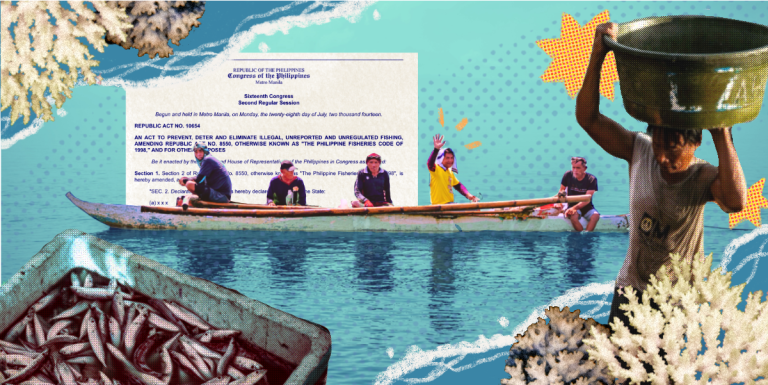Making sense of the Philippines’ rising HIV cases
World AIDS Day has been commemorated every December 1st for more than 30 years now to highlight the efforts toward curbing the threat of HIV/AIDS and to remember the lives lost due to inaction both past and present.
The year is 1981 and, while there have been documented cases from as far back as the 1950s, there is a sense of unease as the United States Centers for Disease Control report an unusually high number of patients with a rare form of pneumonia. Over time, people start to notice that it seems to mostly affect injection-drug users and gay men, earning it monikers such as “junkie flu” and “gay cancer”. Empathy is hard to come by, considering the groups of people most affected, and public opinion is not entirely on the side of the afflicted as cases of a virus without a name start to skyrocket.
Today, people have generally more informed views on the disease we now call HIV/AIDS. Where some once perceived it to be a sort of divine punishment, the public now sees it for what it is: a sickness whose victims should be treated with dignity and compassion.
World AIDS Day has been commemorated every December 1st for more than 30 years now to highlight the efforts toward curbing the threat of HIV/AIDS and to remember the lives lost due to inaction both past and present.
HIV compromises a person’s immune system, making them susceptible to developing severe illnesses that can compound until they are fatal. There is still no cure for HIV, but there are ways to prevent and treat it, with life-saving interventions available in clinical practice.
Cases on the uptick
Despite recent advancements in HIV prevention, testing, and treatment, conditions still seem to be worsening in some parts of the world, including the Philippines. Between 160,000 and 220,000 people are currently living with HIV in the country, according to the latest UN estimates. Children who are not even 15 years old already make up approximately 1,200 of that total.
“The Philippines has experienced the fastest-growing HIV epidemic in Asia and the Pacific,” the the Department of Health (DOH) reported in a press release just last October.
Strikingly, the country has witnessed an average of 58 new cases per day in the second quarter of 2024, a stark contrast to 13 daily cases in 2013 and apparently still increasing compared to the 31 daily cases recorded in 2018.
Perhaps even more alarming, the predominant age group for HIV cases in the country has recently started skewing younger, from people aged 35-49 years old to people aged 25-34 years old. There are also higher instances of children below the age of 15 with HIV, with more recorded cases from that demographic in the last five years than there were through the entirety of the years 1984 to 2018.
“‘Yung isang possible reason kung bakit nasa age group na ito ‘yung concentration ng epidemic ay ang sexual debut ng karamihan ng young people dito sa Pilipinas is 16 to 17 [years old],” explains Denis Cruz, Programs Manager of LoveYourself, a non-government organization (NGO) that provides free HIV testing, counseling, treatment, and life coaching in the Philippines.
Cruz adds that our government only provides condoms to people aged 18 and above, creating a nearly two-year gap for probable unprotected sex. The Philippines has made some efforts to address this issue, with laws now allowing children as young as 15 years old access to HIV testing without a parent or guardian.
While these numbers are evidently a cause for concern, Cruz also offers an additional perspective. “Tumataas ‘yung number of cases because rumarami rin ‘yung nagtetest,” he suggests.
(The number of cases are rising because more people are getting tested.)
Between distributing preventive drugs and managing psychosocial support initiatives, Cruz notes that people are increasingly becoming aware of the risks of untreated HIV and are taking action. With greater proactive testing, fewer people are left undiagnosed, and more are hopefully getting the treatment they need.
Issues and interventions
It cannot be stressed enough that HIV/AIDS is preventable.
Using a condom during sex significantly reduces the risk of HIV infection. Additionally, preventive drugs called pre-exposure prophylaxis (PrEP) can be taken by people who are at a high risk of getting HIV to help protect against infection. Some of these drugs can be long-acting, allowing a person to go a month or more between doses.
If HIV continues to spread at a higher rate, it perhaps says more about the current state of sex education than it does about the people suffering from it.
A sexual health study by the University of the Philippines’ Population Institute in 2021 showed more than a third of young Filipinos aged 15 to 24 did not believe using condoms could reduce the risk of acquiring HIV. Additionally, according to a 2022 survey conducted by the DOH Epidemiology Bureau, youth respondents aged 15 to 17 consistently cited being “afraid of the HIV test result” as the top reason for not getting tested.
Such findings highlight that a lack of proper sex education and negative stigma relating to the disease are the main hurdles keeping the Philippines from mitigating the HIV epidemic. These intertwined issues also stifle efforts to provide proper care and ward off the worst outcomes for people living with HIV.
Advances in healthcare have led to the development of gold-standard antiretroviral therapy (ART), which stops HIV from spreading in the body and revitalizes the immune system against the threat of further infection. As the key to making the virus non-transmissible is by making it undetectable, ART must be taken daily, making it imperative to provide an accessible and steady supply of treatment.
The concoction of medications that comprise the ART regimen work together to reduce the amount of virus in the person’s blood, as well as prevent the virus from becoming resistant to the drugs. When no longer detectable by the tests, the viral levels are low enough that the individual is no longer at risk of spreading HIV to their sexual partners. For pregnant people with HIV, taking ART protects the fetus against infection.
As ART also gives the immune system a chance to fight back and recover, they will eventually no longer suffer from the symptoms of HIV/AIDS and can live a long and healthy life.
With such life-saving interventions available, the number of HIV/AIDS-related deaths have dropped significantly across the globe over the last 20 years.
But this doesn’t seem to be the case locally. While DOH recorded less than 100 annual HIV-related deaths in 2011, this tally has risen exponentially a decade later, with 879 documented deaths in 2022. This year, 58 HIV-related deaths per month were recorded on average in the first three quarters of this year.
More than 8,000 Filipinos have lost their lives due to HIV/AIDS complications in the past 40 years alone—likely even an underrepresentation of the actual numbers, amid the stigma and inaccessibility that deter detection and treatment.
Taking steps forward
For over 30 years now, World AIDS Day has been commemorated every December 1st to highlight the efforts toward mitigating the threat of HIV/AIDS and to remember the lives lost due to inaction both past and present. Evidently, the work continues and more needs to be done to support those at risk and to curb the epidemic in the Philippines.
NGOs such as LoveYourself are working hand in hand with the government toward addressing these issues. The Department of Education (DepEd) has a policy on the implementation of comprehensive sexual education in schools that Cruz and his team have been monitoring to ensure that correct information is instilled in the youth.
Besides NGOs, HIV testing and treatment are now being offered free of charge at government clinics, typically labeled “social hygiene clinics” to help encourage people to not feel uncomfortable about going for testing. More government testing facilities have been set up in recent years, even accommodating people who come in after typical working hours. Additionally, LoveYourself offers testing services on weekends, when government facilities are closed.
People working at these facilities are legally obligated to observe confidentiality. Should anyone have reservations about going to a testing facility, LoveYourself has community-based volunteers who can meet with individuals at public places like coffee shops to conduct the test. They also offer self-testing kits.
Above all else, Cruz emphasizes that testing is just the first step. For instance, a referral network among public offices is helping people access treatment and other support services after testing.
“I appreciate ‘yung nagagawa ng government,” Cruz states. However, he also notes that the referral network lacks mental health programs, which he views especially important considering the stigma surrounding HIV/AIDS.
Moreover, expanding and training the workforce at government testing facilities can help maintain a standard of quality for the services offered at these venues, in addition to checking that resources such as medications and test kits are always in ample supply.
We have come a long way since the 1980s. A positive HIV test is no longer a death sentence. Although people still have to combat the stigma and misinformation that surrounds HIV/AIDS, they can make use of the arsenal of preventive drugs, testing kits, and treatments at their disposal.








